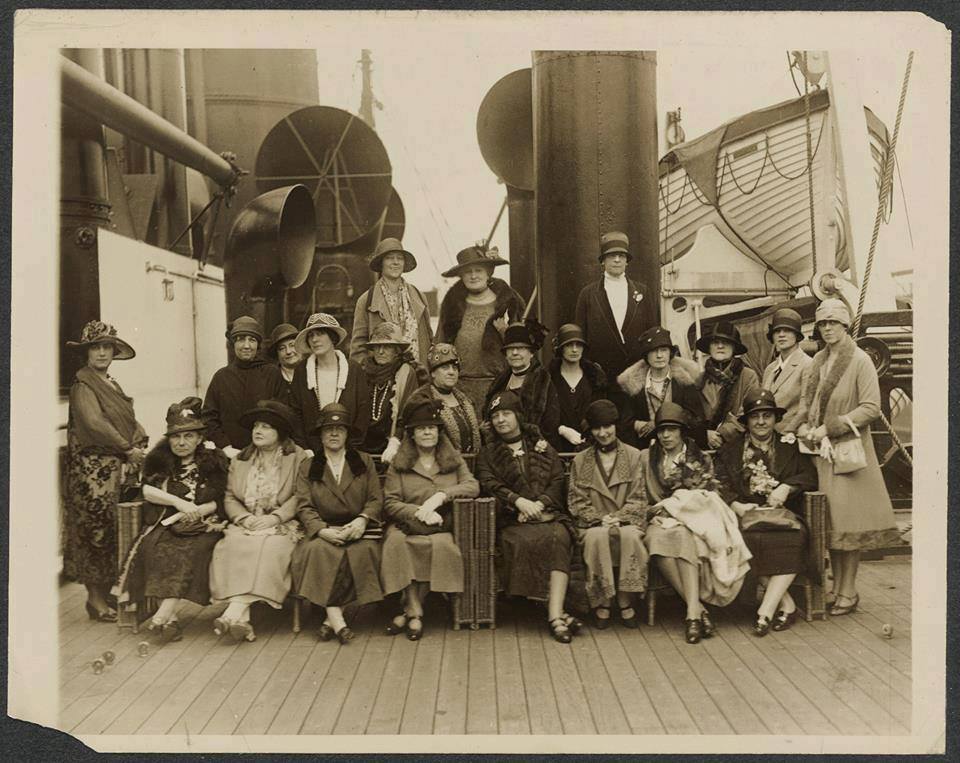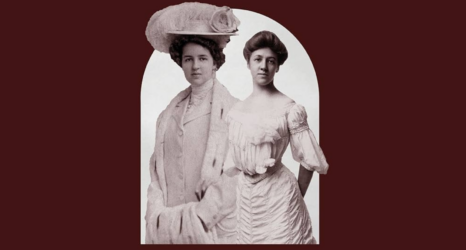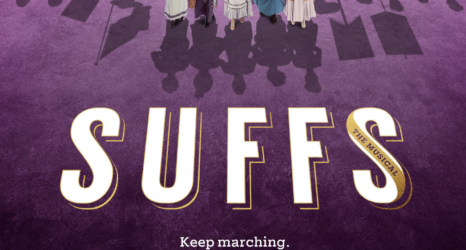
Today in Feminist History is our daily recap of the major milestones and minor advancements that shaped women’s history in the U.S.—from suffrage to Shirley Chisholm and beyond. These posts were written by, and are presented in homage to, our late staff historian and archivist, David Dismore.
May 29, 1926: The long-standing rivalry between the National Woman’s Party and the League of Women Voters (successor to the National American Woman Suffrage Association) went international this week, with one victory for each side so far.

The stage upon which the battle between the two wings of the American women’s rights movement is being fought is the Tenth Congress of the International Woman Suffrage Alliance, which opens tomorrow at the Sorbonne in Paris.
The first volley in the present phase of the conflict was fired by Belle Sherwin of the L.W.V., who objected to the admission of the N.W.P. as a second group representing the women of America: “The League objects to the admission of the Woman’s Party on a ground which everyone concerned recognizes as a fact – that the Woman’s Party and the League are opposed to each other in policy and political action.”
Sherwin then used the National Woman’s Party’s sponsorship and strong support of the Equal Rights Amendment to illustrate the difference between the philosophies of the two factions. Though both groups support equal suffrage worldwide, and equal opportunities for women, the League opposes the kind of absolute equality in all circumstances demanded by the Woman’s Party, and endorses some “protective” labor laws applying only to women. The National Woman’s Party believes that “protective” labor laws for women are actually more “restrictive” than “protective,” and often make it harder for women to compete with men for jobs.
Despite a fine presentation by Doris Stevens, head of the N.W.P. delegation, the group was denied admission to the International Woman Suffrage Alliance by its Board of Directors, even though several other nations were permitted to be represented by more than one group.
But while the L.W.V. won that round yesterday, the N.W.P. is celebrating today. A committee of the International Woman Suffrage Alliance just endorsed the main resolution the N.W.P. came here to support. Following a vigorous debate, the committee voted 70 to 38 to submit a resolution to the convention stating that:
“No special regulations for women’s work different from regulation for men’s should be imposed on women; that the only policy consonant with the present trend of labor legislation, which permits the fullest development of the welfare of all workers and safeguards individual liberty, is that of basing all labor regulations or restrictions upon the nature of the work and not upon the sex of the worker.”
Doris Stevens, Mabel Vernon, Anita Pollitzer, Alva Belmont, and other members of the National Woman’s Party will remain in Paris to lobby the delegates when they are outside the conference, and some seem quite supportive. Gabrielle Duchene, a veteran European suffrage leader, said she was happy to see a young and active group like the N.W.P. coming to Europe to strengthen the international women’s movement.
So, though the National Woman’s Party (founded by Alice Paul) and the League of Women Voters (founded by Carrie Chapman Catt as the National American Woman Suffrage Association’s campaign for the ballot was clearly nearing final victory) are still continuing the rivalry that began in 1913 when the two found that they were in sharp disagreement over what strategy and degree of militance was best for getting the suffrage amendment passed, it appears that both factions are still as enthusiastic and committed to working for women’s rights as ever, and that’s just what’s needed to make further progress toward full equality.





